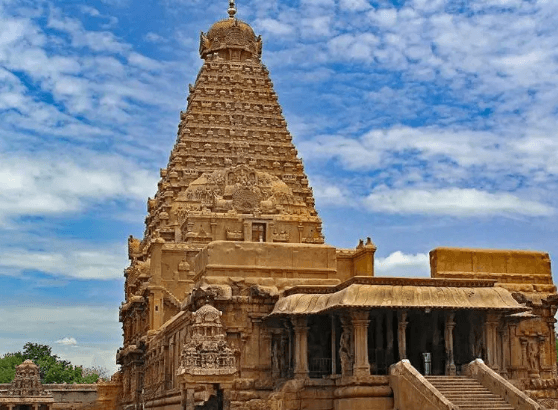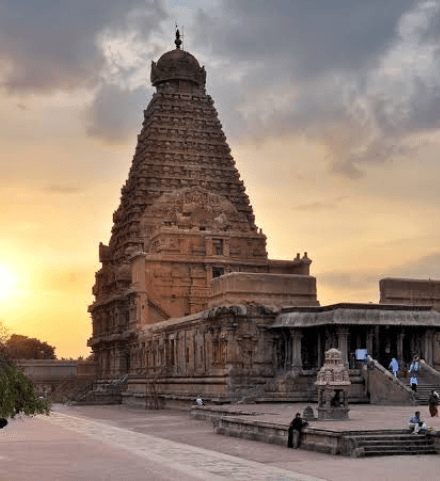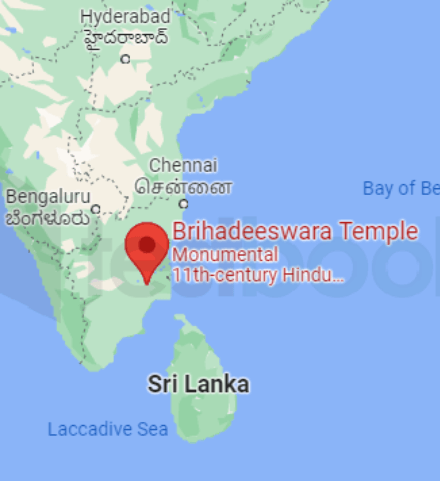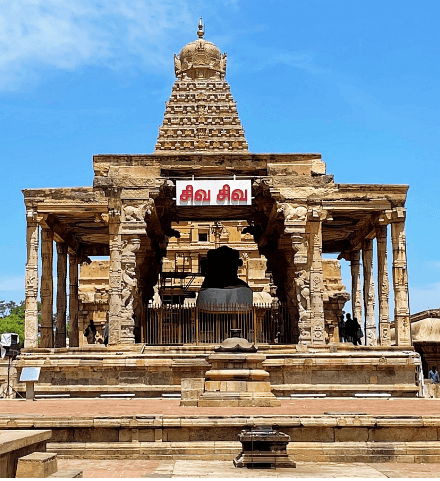
The Brihadeswara Temple
India’s diverse culture, history and exceptional architecture are reflected on the temple walls that have been preserved through the centuries. With the rise of Hinduism, India witnessed the establishment of numerous temples dedicated to various deities of the Hindu pantheon. With temples scattered throughout the country, each of them unique in their own way, attempts were made to classify them on the basis of their region, architectural style and complexity.
According to the Shilpashastra the temples of India can be classified into three types:
- Nagara Style (North Indian style), were the temples belonging to the land between the Himalayas and the Vindhyas
- Dravidian Style (South Indian style) were the temples belonging to the land between the rivers Krishna and Kaveri
- Vesara Style (a hybrid of northern and southern style) were the temples belonging to the land between the Vindhyas and the River Krishna.
Certain features that distinguish a Darvidian style of architecture from the other two styles are:
Vimana:The Vimana is the tall structure surmounting the sanctum sanctorum (garbhagriha). A pyramidal structure and square in plan, the vimana has several tiers placed one above the other in a decreasing order.
Stupika:Stupika is the large stone that tops the last tier of the vimana. The stupika is topped with the finial adding to the height of the vimana.
Gopurams:Gopurams are tall gateways peculiar to the South Indian style of temple architecture. The gopurams evolved with time and became the focal points in the later temples of South India. The later temples have taller gopurams, often taller than the vimana itself.
Tanjavur had been a prominent Royal city from the time of Muttaraiyars who founded and made it their capital. There are different versions of the origin of the name Tanjavur. One version says it is derived from the name of an asura, Tanjan. It is believed that Tanjan created chaos in the neighbouring areas as a result of which Sri Anandavalli Aman and Sri Nilameghapperumal (Vishnu) had to destroy him but before doing so Lord Vishnu granted Tanjan his last wish of naming the city after him. Others believe that it is derived from the word Thanjam which means refuge/asylum in Tamil. Hence Tanjavur means, the ‘City of Refuge’.
Tanjavur witnessed a series of rulers come and go, from the Cholas to the Nayakas, the Marathas and finally the British. Amongst them all, the dynasty responsible for making Tanjavur what it is today, were the Cholas.
The Cholas predominantly ruled over the southern region of Tamil Nadu. Though they seem to have been in power since the Sangam age, they rose to prominence in the ninth century and continued to rule upto the thirteenth century. Vijayalaya, one of the greatest rulers of the Chola empire founded a small kingdom in Tanjavur and made it his capital. Tanjavur served as the capital of the Cholas until the reign of Rajarajendra who shifted the capital to Gangaikonda Cholapuram. The Chola Kings, Rajaraja I (985 CE - 1012 CE) and his son Rajarajendra are known for their naval and military strength and for expanding their empire beyond the boundaries of South India.



The Cholas were great devotees of Shiva. One of the earliest temples created by the Cholas was the Nataraja Temple at Chidambaram. Rajaraja I, who ascended the throne in 985 CE made large donations and gave gifts to the temple at Chidambaram in the year 1004 CE. In gratitude, the temple authorities gave him the titles of ‘Sri Rajaraja’ and ‘Sivapadasekhara’. It is believed by some that it was at this time that he felt the need of a temple dedicated to Lord Shiva at his capital, Tanjavur. Others are of the opinion that after Rajaraja expanded his empire, he came to be known as the ‘Lion among the Emperors’. He built this grand temple dedicated to Lord Shiva in order to commemorate this achievement.
Rajaraja I, started the construction of the Brihadeswara Temple in the nineteenth year of his reign. A major source of information related to its building and construction has been the inscriptions that run throughout the temple’s plinth. One inscription reads, ‘The King, on the two hundred and seventy fifth day of the twenty fifth year of reign (A.D. 1010), presented a gold covered finial to be planted on the top of the vimana of the temple’. This means that it took a mere six years for this architectural brilliance to be completed.
Rajaraja named the temple after himself and called it, Rajarajeswaram. The King installed a massive Shivalinga in the sanctum sanctorum and according to the inscriptions the linga was called by the names Adavallan, Dakshina Meru Vitankan and Rajarajaesvaram Udaiyar. For the longest time, even during the rule of the Pandyans who built the Amman shrine in the temple complex, the temple was known by the name given by its builder. It is said that years later, the deity came to be associated with the name Thiru Peruvudaiyar (the ‘Great Lord’ in Tamil) and Brihat-Ishvar was its Sanskrit translation. Amman was given the Sanskrit name, Brihat Nayaki or Brihan Nayaki (the ‘Great Lady’). This might have been the origin of the name ‘Brihadeswara given to the temple, though none of the inscriptions or hymns of the time talk about the switch from Rajarajesvaram to Brihadeswara.




